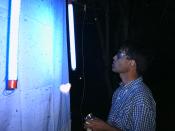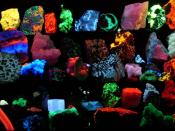A team of astronomers from France, the USA, Japan, and Korea, led by Denis Burgarella has recently discovered new galaxies in the Early Universe. They have been detected for the first time both in the near-UV and in the far-infrared wavelengths. Their findings will be reported in a coming issue of Astronomy & Astrophysics. This discovery is a new step in understanding how galaxies evolve.
The astronomer Denis Burgarella (Observatoire Astronomique Marseille Provence, Laboratoire d'Astrophysique de Marseille, France) and his colleagues from France, the USA, Japan, and Korea, have recently announced their discovery of new galaxies in the Early Universe both for the first time in the near-UV and in the far-infrared wavelengths. This discovery leads to the first thorough investigation of early galaxies. The discovery will be reported in a coming issue of Astronomy & Astrophysics.
The knowledge of early galaxies has made major progress in the past ten years.
From the end of 1995, astronomers have been using a new technique, known as the "Lyman-break technique". This technique allows very distant galaxies to be detected. They are seen as they were when the Universe was much younger, thus providing clues to how galaxies formed and evolved. The Lyman-break technique has moved the frontier of distant galaxy surveys further up to redshift z=6-7 (that is about 5% of the present age of the Universe). In astronomy, the redshift denotes the shift of a light wave from a galaxy moving away from the Earth. The light wave is shifted toward longer wavelengths, that is, toward the red end of the spectrum. The higher the redshift of a galaxy is, the farther it is from us.
The Lyman-break technique is based on the characteristic "disappearance" of distant galaxies observed in the far-UV wavelengths. As light from a distant galaxy is almost...


